There is no dearth of evidence to prove that large-scale developmental projects in India have impacted the lives of those living the closest to them. Yet, it is seemingly becoming easier for such development projects to receive green signals, especially considering the newly released draft Environment Impact Assessment 2020, and the opening of the coal sector for commercial mining.
Over the decades, waves of resistance from Adivasi communities against mining, large hydropower projects, and roads, amongst other projects have risen, amplifying the lack of public consultations, weak implementation of legal safeguards, and the immense ecological destruction that accompany such activities. But, when Dr. Bhanumathi Kalluri (BK) began working on campaigns resisting mining, she saw that there was another challenge at hand amongst the affected Adivasis–a lack of access to technical information on violating laws and environmental safeguards, and minimal opportunities for Adivasi women to strengthen their voices.
Vaishnavi Rathore (VR) catches up with Dr. Kalluri, who as the Director of Dhaatri Resource Centre for Women and Child Rights, has been involved in filling this gap since 2007. With the Centre beginning its work in Vishakapatnam (Andhra Pradesh), Dr. Kalluri has been involved in capacity building with indigenous people on defending human rights, and research on alternative development strategies at a national scale. Dhaatri’s work has extended to Rajasthan, Gujarat, Maharashtra, Madhya Pradesh, Chhattisgarh, and Odisha through the national network Adivasi Ekta Parishad, and to 32 villages in Andhra Pradesh.
Dr. Kalluri gives a glimpse into the close connections between Adivasi groups with natural resources, and how this relationship is interspersed with the law, colonial histories of resource management, and gender.
VR: How has mining changed the relationships between Adivasi communities and their natural resources?
BK: The first impact of mining in Adivasi areas is usually displacement from land, which then impacts their livelihoods. Agriculture diminishes, either directly due to losing land, or indirectly due to mine tailings, and the contamination of land and water bodies. In such a scenario, the knowledge, self-resilience, and food security that the Adivasis previously had disappear in phases, depending on the scale of mining at play.
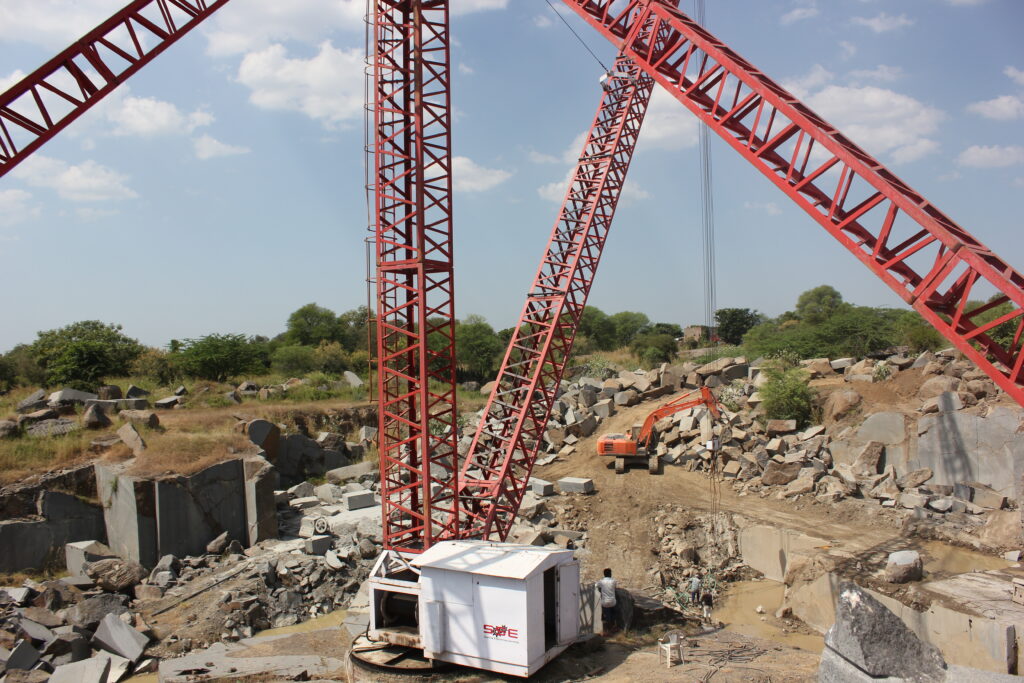
Those who lose land often migrate elsewhere, or become landless daily-wage labourers in the mines and other construction projects. The severity of these impacts can be seen in the present COVID-19 pandemic: we have been receiving many calls from Madhya Pradesh and Rajasthan, where mining has been going on for years and people have migrated to for work. They are now stranded and starving, whether in their place of migration, or in their native homes. On the other hand, in some scheduled areas of Andhra Pradesh and Chattisgarh, where no external projects have been introduced, the people are still in control of their resources. The only impact they’ve felt has been that their inability to earn through selling their Non Timber Forest Produce (NTFP), due to the lockdown.
Another impact of mining is water pollution. While the toxicity of water resources from mine tailings (and other resources from air pollution) are blatant, combating this is a big challenge. Environmental monitoring and regulation are poor, violations are difficult to prove. Reporting the latter brings with it potential threats of intimidation from mining companies.
VR: Does this shift impact women in particular?
BK: It has direct impacts on Adivasi women as they have key roles to play in traditional livelihoods. They are the principal actors in traditional farming, foraging for wild food and NTFP, apart from being seed-keepers, and managing food, water, and livestock. While public interest litigations (PILs) can be filed in court, they do not have the strength of direct litigations filed by affected communities. Yet, direct litigations are a challenge since Adivasi women do not have access to information or justice systems. Not only is there the fear of intimidation by the companies, but also by men in their own communities. Formal action then gets deterred.
In our work, we are witnessing this in mine site after mine site. In general, while women largely understand the negative impacts of mining, their ability to file for redressal is non-existent. Their participation in public hearings is also under duress. As a result, then, their protests are not considered, or even worse, their silence is construed as consent.
VR: It is generally argued that natural resource management practices followed today are direct legacies of colonial management and control over resources. Do you think these practices have changed in recent times?
BK: Resource management is still largely both colonial and patriarchal. However, the shift now is towards crony capitalism, and corporate-governed regulations and policy frameworks.
Post-Independence, there was an initial period of socialist principles embedded in our Constitution, governance, and policy frameworks. These were reflected in special laws for Scheduled Castes (SC) and Scheduled Tribes (ST). For STs, the enemy was the traditional feudal landlord who usurped their lands. That is why when most of my contemporaries started working on issues of Adivasi rights and environmental justice, our campaigns were against the land alienation brought about by traditional feudal exploitation.
The contestation around forests, in the hills & in India, is rooted in our colonial past. To understand its politics is essential. Cannot be done in the narrow frame of ‘conservation’. @nit_set thread on #ChipkoMovement The world and #GoogleDoodle missed the forests for trees https://t.co/rTvLKOa0kY
— Manshi Asher (@ManshiAsher) March 27, 2018
After the ‘90s, things changed. Exploitation and violations were now emerging more from the State–in particular, land alienation in fifth schedule areas for mining, large dams, power projects, conservation projects, which were “development” projects of the government, became prominent [schedule five areas are demarcated by the Union Government on the basis of having large tribal populations, being under-developed, and facing economic disparity. At present, 10 states have fifth schedule areas]. But, this was accompanied by more violations of the law, much more so than committed by any feudal local landlords!
The more recent policy shifts in managing natural resources today push for the commercialisation of Adivasi lands and forests, even in Schedule Five areas, for tourism, mining, or infrastructure projects. From community management of forests, new laws now instead propose the industrial management of forests and the diversion of Adivasi lands–like with the Compensatory Afforestation Fund Management and Planning Authority (CAMPA). [CAMPA is an authority formed under the Compensatory Afforestation Fund Act, 2016. It is a fund where developers have to pay to “compensate” for the forest land they razed for their construction projects.]
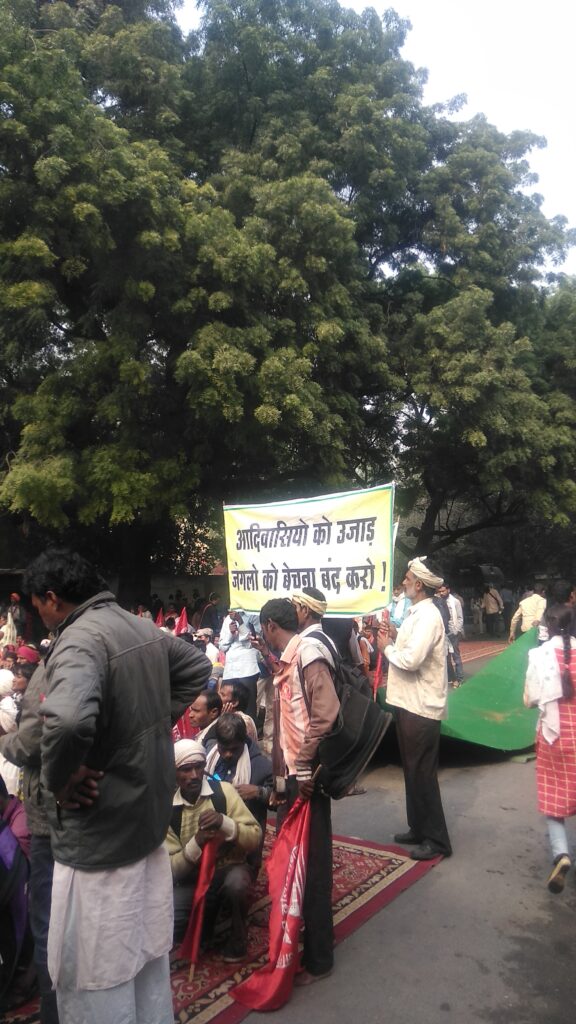
Now, there is a reason I call it ‘patriarchal’. The concept of gender justice as central to human rights is very new in environmental justice movements. And even here, we have allowed International Financial Institutions to define our gender policies–we either offer more monetary compensation to women, or simply include women in monetary compensation packages. But, women are not recognised as directly affected farmers, foragers, knowledge practitioners, or economic heads of families in their own right.
Take for instance the environmental rehabilitation promised under the District Mineral Foundation (DMF) [DMFs are established by the State Governments as a trust or non-profit body in the mining operation affected district to benefit those affected by mining]. The welfare programmes for women offered are a complete mismatch, compared to the serious impacts faced by women where mining operations occur. The present trend is to take advantage of women’s self-help groups to distribute facile income generation or welfare, when in fact their primary self-reliant modes of economic sustenance have been destroyed by these very sources of funds!
VR: This relationship between the State and its natural resources leads to tense relationships with Adivasi communities–is this a similar trend also visible in other South Asian countries?
BK: Most mineral reserves in the world are located in indigenous peoples’ lands. So much so, the term “resource curse” is now often used for indigenous people. This is a similar scenario across South Asia, but the key differences are the range of minerals available, the degree of oppression and shrinking democratic spaces, and available constitutional safeguards.
Interestingly, as compared to the many South and South East Asian countries emerging from periods of war and conflict, India used to be considered a more evolved democracy, that had spaces for negotiation and representation, and stronger constitutional mechanisms. On the other hand, in countries like Myanmar, the Philippines, and Laos, war and military governments have been financed by the largely illegal and multinational mining industries operating there.
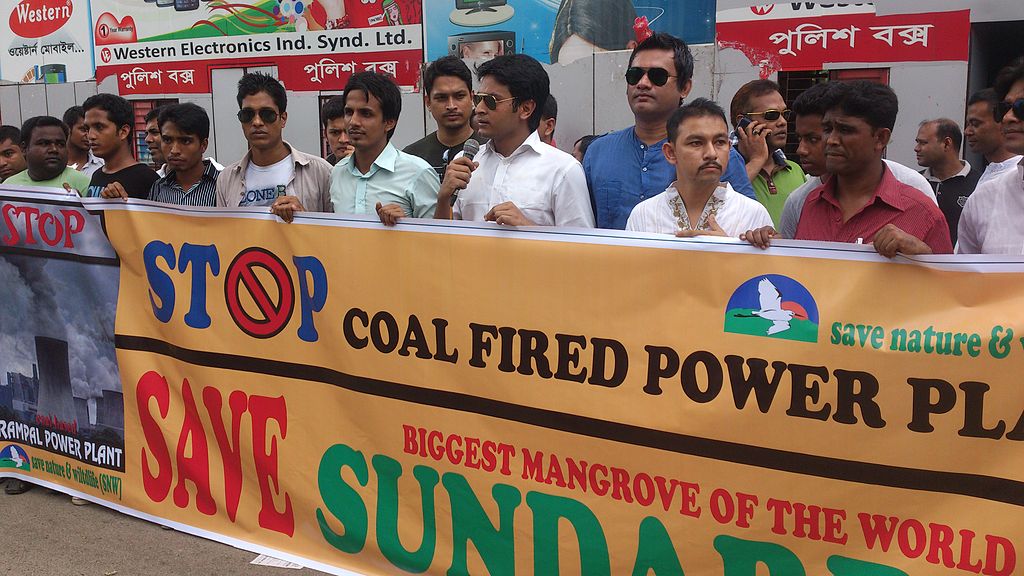
But what is commonly emerging is that more indigenous peoples’ areas are being plundered and therefore, more indigenous struggles are emerging to resist these practices. In the last few years, the need for indigenous women to have platforms for collective action to confront these dangers is also being recognised. This is leading to the building of environmental movements by indigenous women’s groups at national and regional levels.
In India, it now seems like we have moved away from constitutional safeguards to welfare promises, from legal safeguards to policy dominance. Yet, the latter is merely an intent of good governance, that eventually compromises legal accountability—like the sustainable mineral framework I mentioned earlier. While this approach may champion “Mining that is financially viable; socially responsible; environmentally, technically and scientifically sound,” its allegiance has been to the National Mineral Policy’s focus on ensuring “that the regulatory environment is conducive to ease of doing business with simpler, transparent and time-bound procedures for obtaining clearances.” In turn, this approach has weakened the environment, Fifth Schedule laws, and labour laws, including the definition of child labour. The approach is so powerful, that it has even hastened amendments to the mineral and labour laws, just announced amidst the COVID-19 induced lockdown.
VR: Laws like the Forest Rights Act (FRA) and the Land Acquisition, Rehabilitation and Resettlement Act (LARR, 2013) are seemingly meant to benefit local communities. Do you think they have been able to do justice to their aims?
BK: Talking about the FRA, it is not unknown that the Act has been poorly implemented. This is mainly due to resistance from the Forest Department, particularly in terms of the Community Forest Rights (CFR) that the Act provides. They resist CFR, as under the Act these rights legally ensure that the local communities have a say in the diversion of forest lands for non-forest purposes, like for mining or tourism.
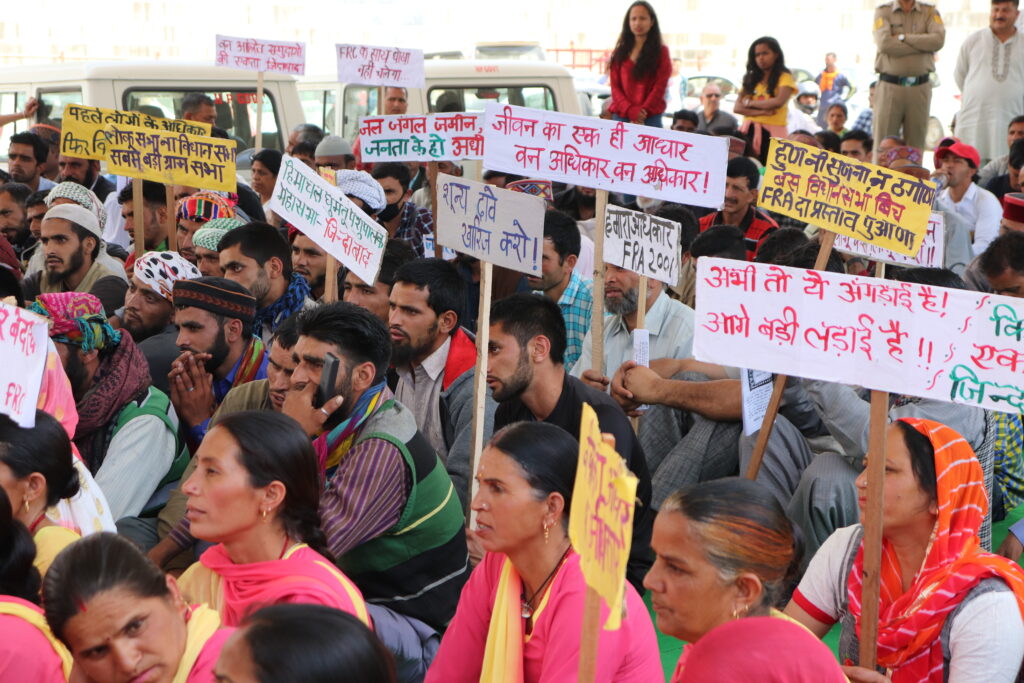
There is an inherent problem with LARR, though. [LARR regulates land acquisition and lays down the procedures for granting fair compensation, rehabilitation, and resettlement to affected persons. Interestingly, the Act was drafted with the intention to discourage land acquisition]. Earlier policies for tribal areas which prioritised non-displacing alternatives, shifted to “land for land compensation”, with displacement as a must. Now, both land and livelihood compensation have been dispensed with, and with that, so has the right to reject development. It is assumed that these projects are an unchallengeable necessity and hence, merely cash compensation is a negotiable affair. Yet land–which is a major resource–is lost, leaving affected communities with little to choose from when LARR and the Environment Protection Acts are implemented in tokenistic ways.
Implement Forest Rights Act in state, say residents
Say govt must protect interests of forest-dependent communities
Demand for effective implementation of the Forest Rights Act (FRA) on ground is gaining momentum in the Saraj valley of Mandi district.https://t.co/olqNBxU0Ew
— mm&P (@minesmineralsP) February 15, 2020
Generally speaking about the legal discourse, we often find that while environmental laws are upheld by the judicial channel of the National Green Tribunal (NGT), most of the NGT orders are ignored, while in some cases, regional tribunals are deliberately made dysfunctional, with vacancies not being filled! For affected women to be able to utilise these legal instruments, there are innumerable additional threats.
This is not to say that positive judgements have not been made in favour of Adivasi communities; the Samata Judgement was a case in point. [In this 1997 judgement, the Supreme Court of India ruled that a corporate body was also a non-tribal person and hence private mining licenses were a violation of the Fifth Schedule and land transfer regulations.] Although, it must be noted that the judgement itself has been sadly misinterpreted by different state governments for their own convenience. Several other positive judgements followed, upholding the cultural and constitutional rights of Adivasi groups to their natural resources, while also making the state responsible for protecting intergenerational equity and community rights to resources.
VR: How has your experience been as a woman academic and activist working in the field of Adivasi rights and environmental justice?
BK: The fascinating part of our work, as practitioners and researchers, is just becoming aware of the fact that Adivasi women have and practice immense knowledge in their day-to-day ways of life; yet, their stories are still largely untold.
But, the more challenging part is that there seem to be very few women, both Adivasi and non-Adivasi, working in the field of environmental justice. Those working on the ground, seem to be even fewer. This is because while there are many women fighting campaigns on the ground and facing risks while doing so, their leadership is very limited. Women are not given enough support to be visible and articulate.
Our research and work are mainly focused on strengthening such campaigns by creating opportunities for more Adivasi women to strengthen their voices, and increasing their access to so-called “technical information” on laws, environmental violations, and investments. We are trying to create and redefine gender policies and women’s rights outside of the facade that states and financial institutions have been trying to distract us with.
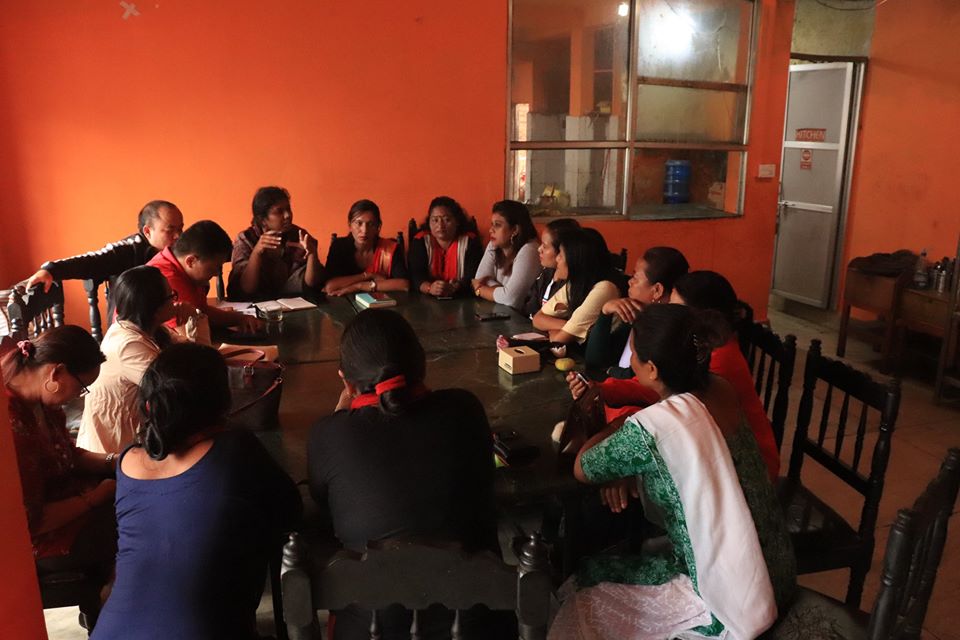
This has not been easy. While Adivasi women have been at the forefront of struggles against development projects, and have faced threats for doing so, Adivasi campaigns have been largely led and defined by men. We should also keep in mind that many times, violence against women is beyond the legal; these violations by individuals, corporates, and even the state, can be hard to prove. So, the painful realities that women in general face as a result of state policies remain invisible.
Featured image courtesy of Vaishnavi Vardarajan. | Views expressed are personal.


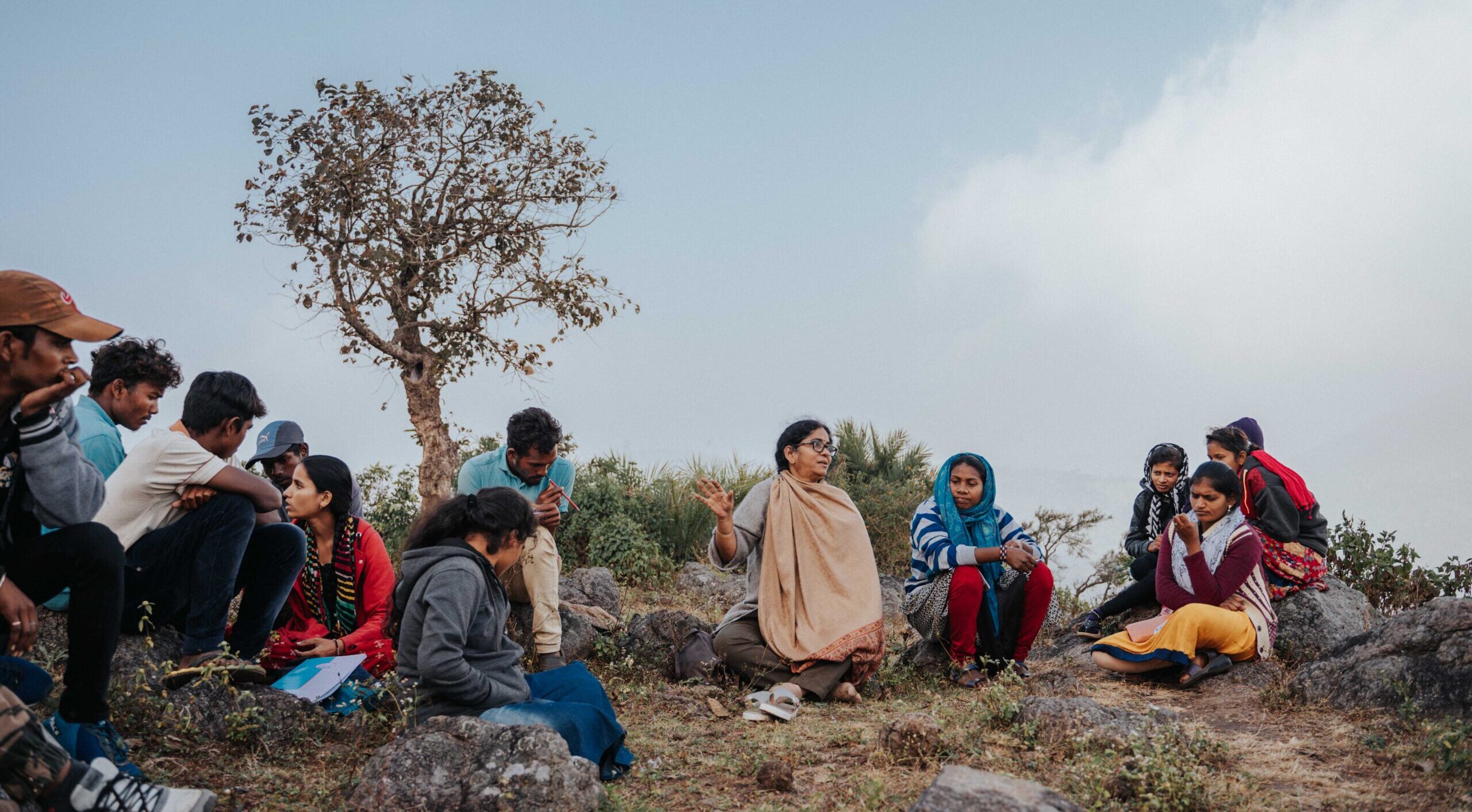




[…] their district—Keonjhar’s workers were to receive ₹298/day owing to funds coming in from the District Mineral Foundation, as opposed to the state’s wage rate of […]
[…] their district—Keonjhar’s workers were to receive ₹298/day owing to funds coming in from the District Mineral Foundation, as opposed to the state’s wage rate of […]